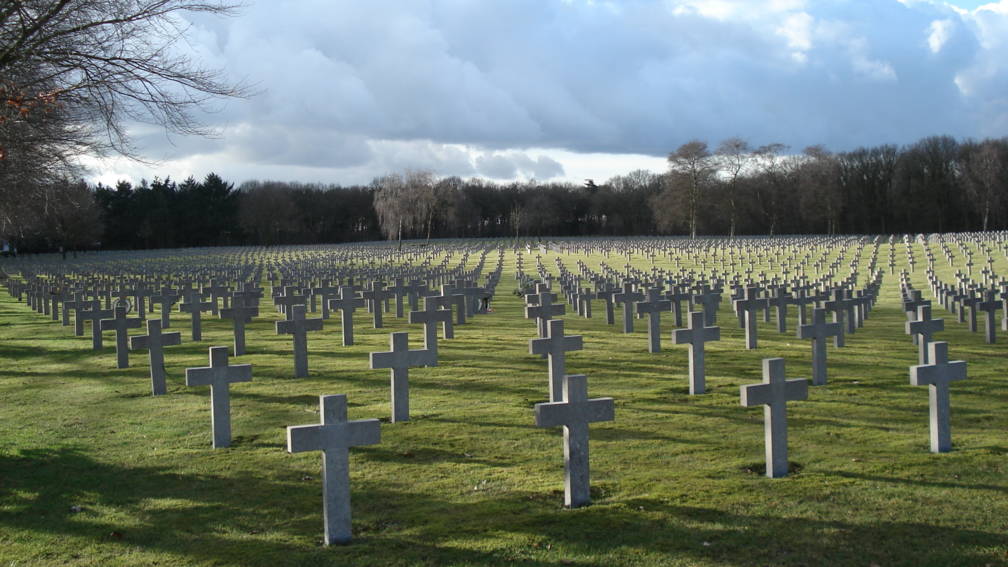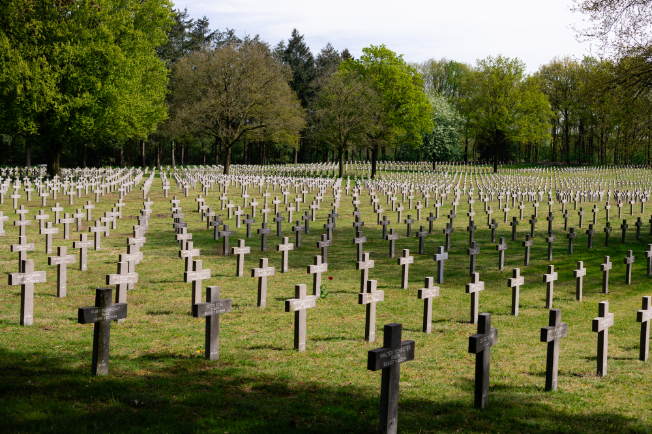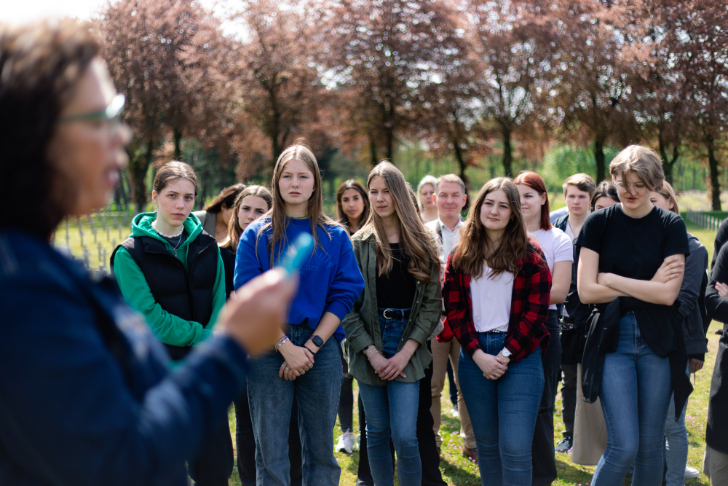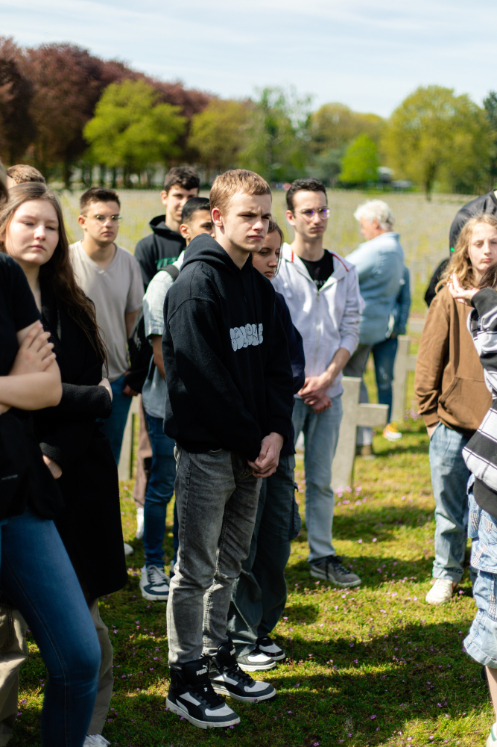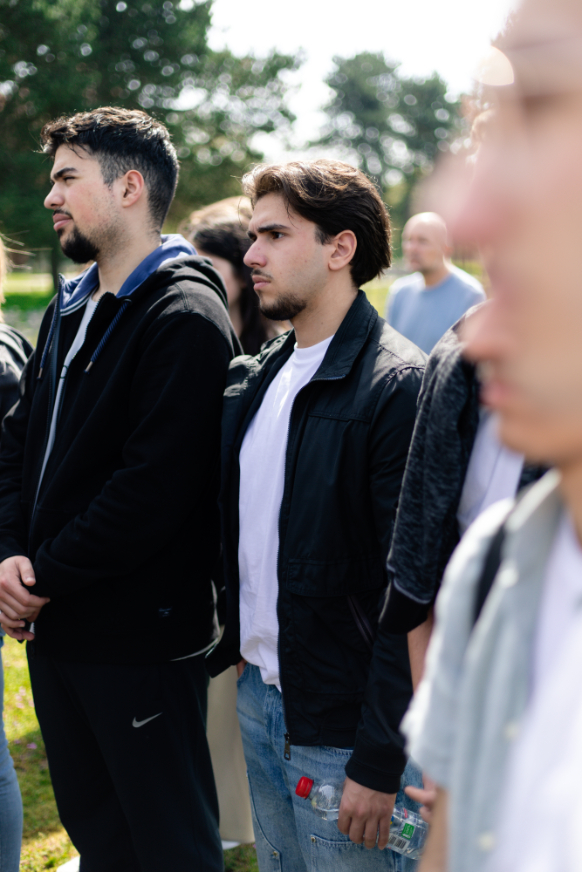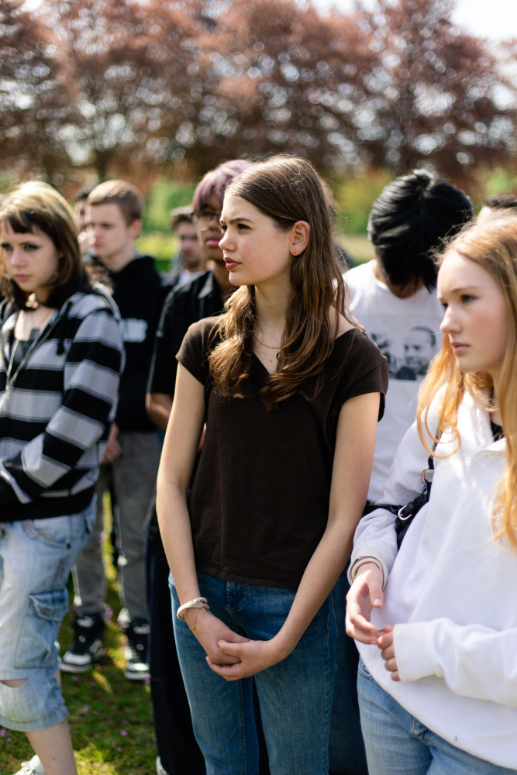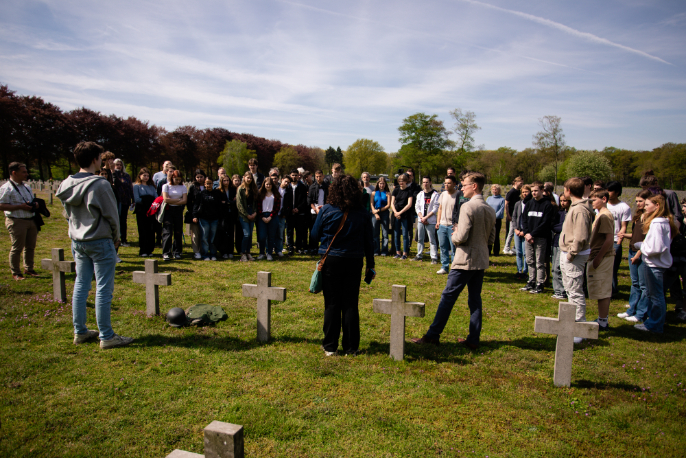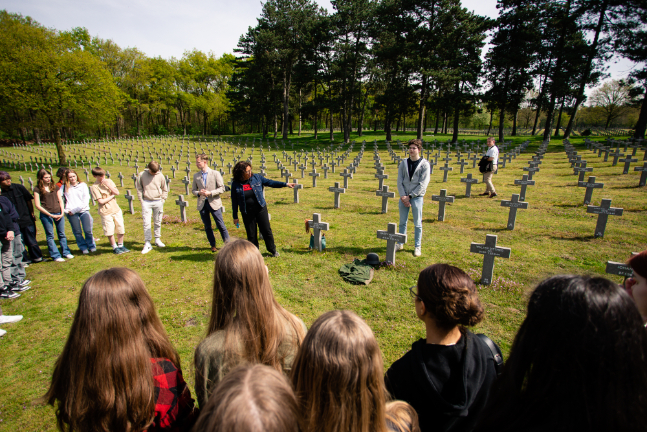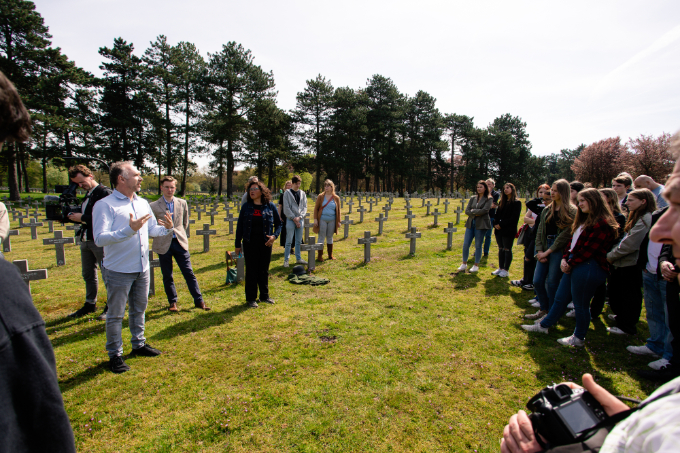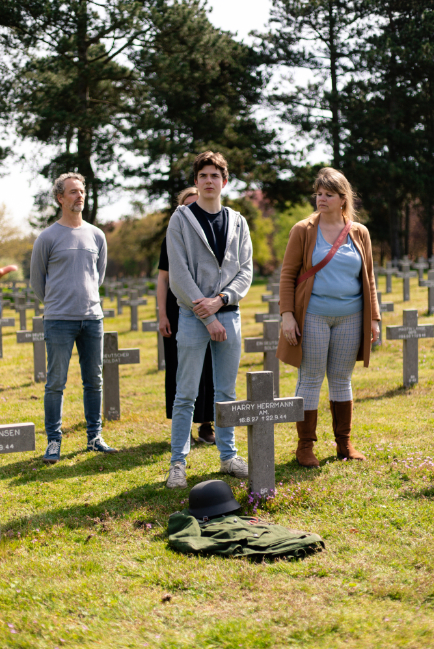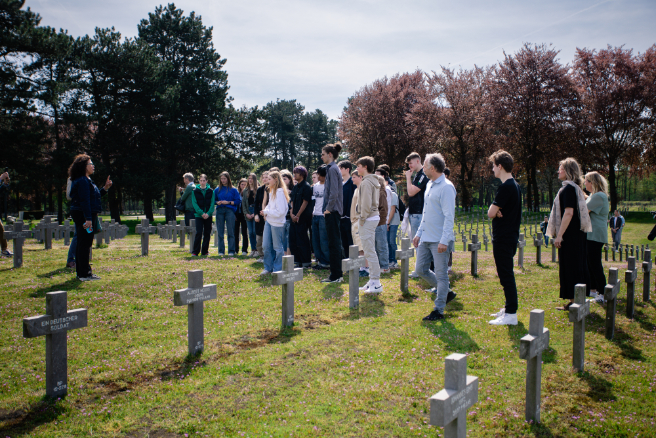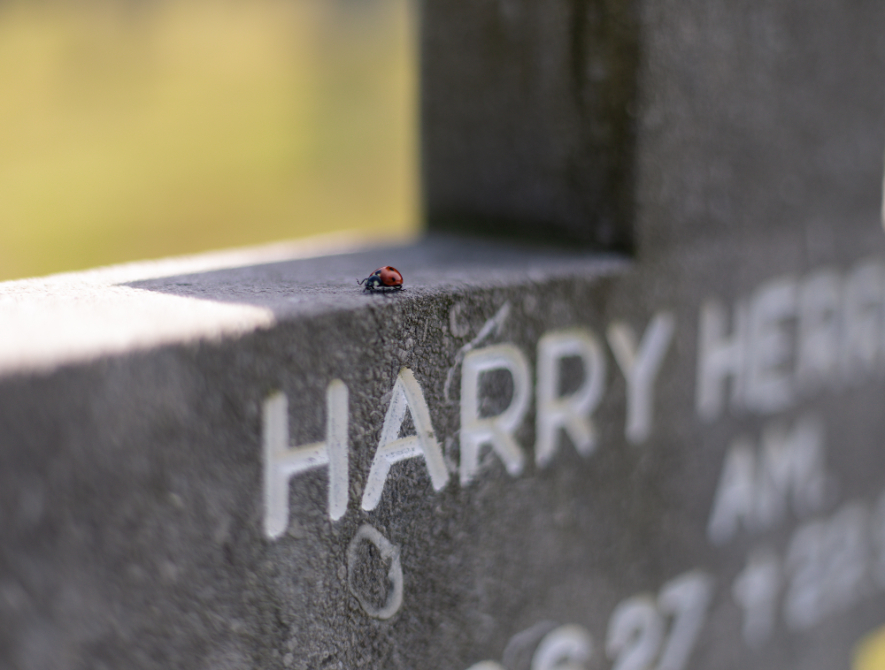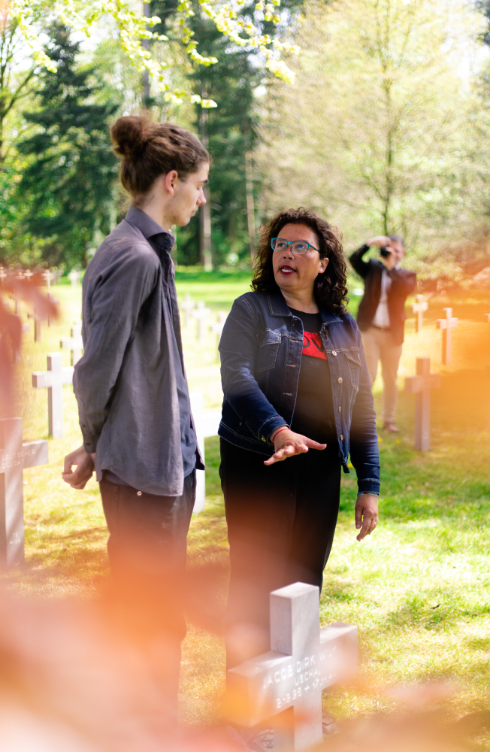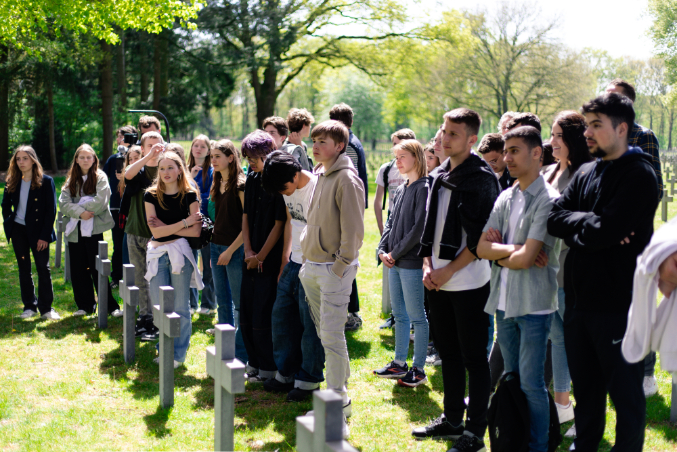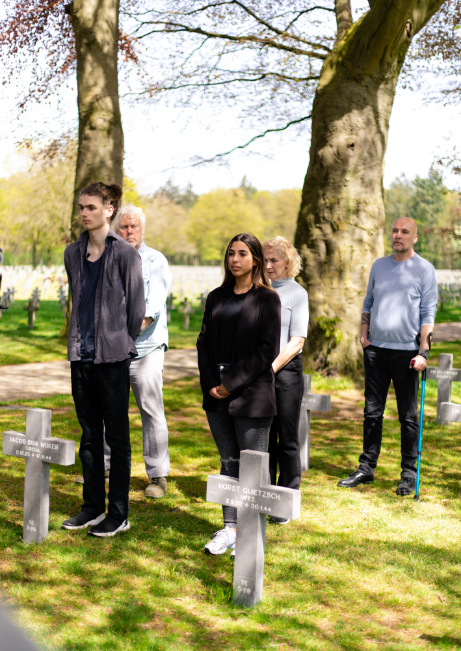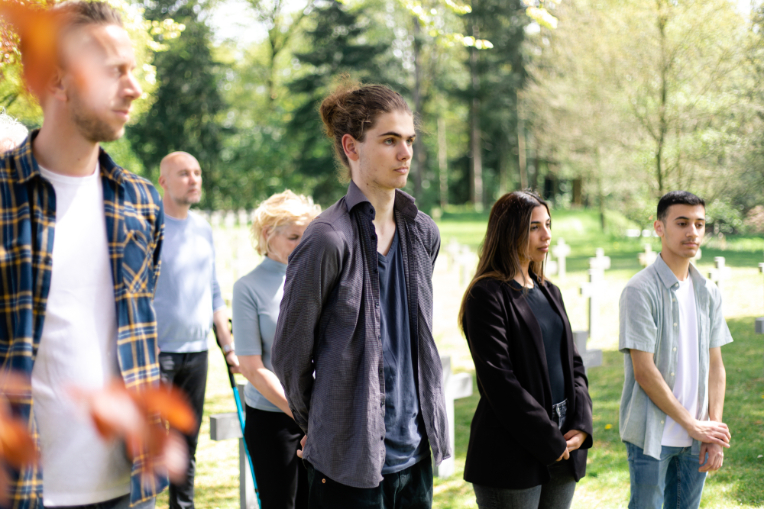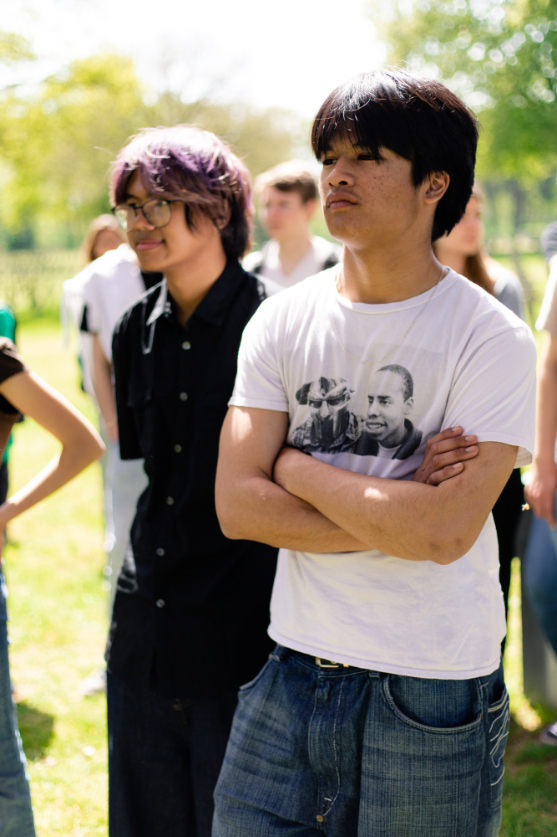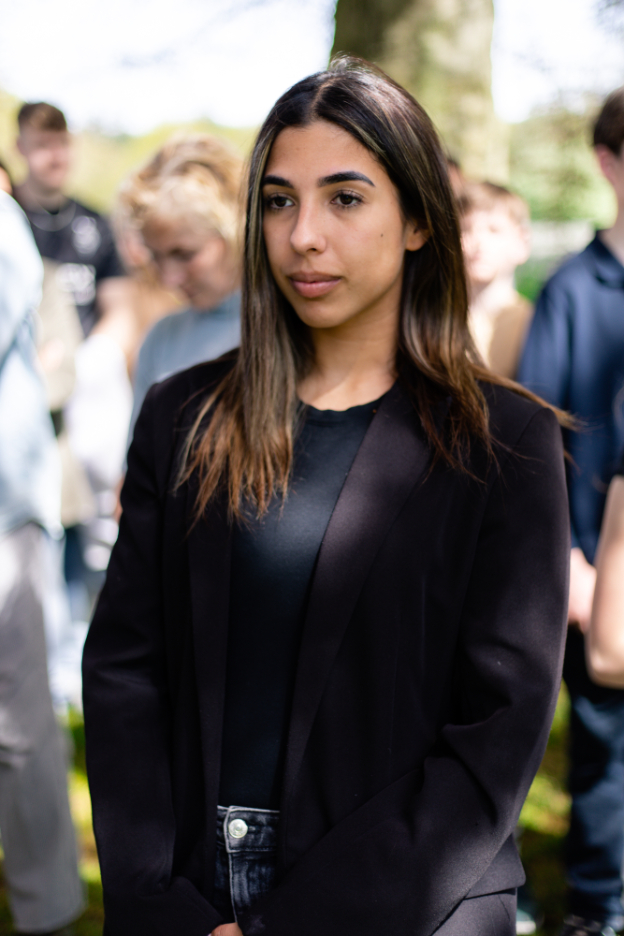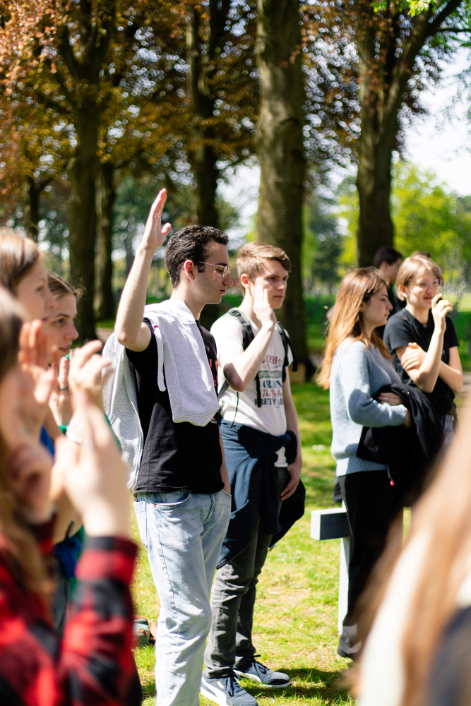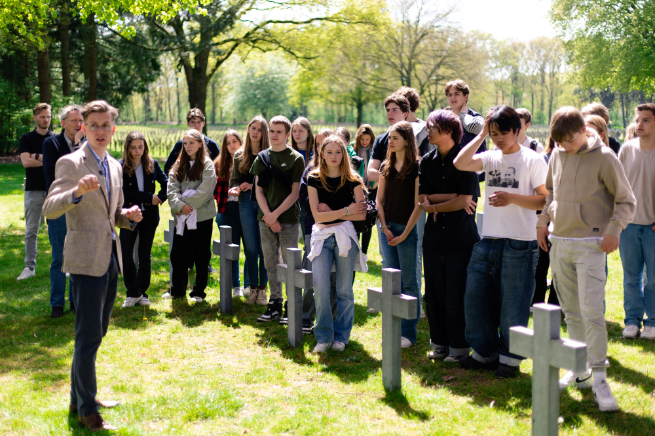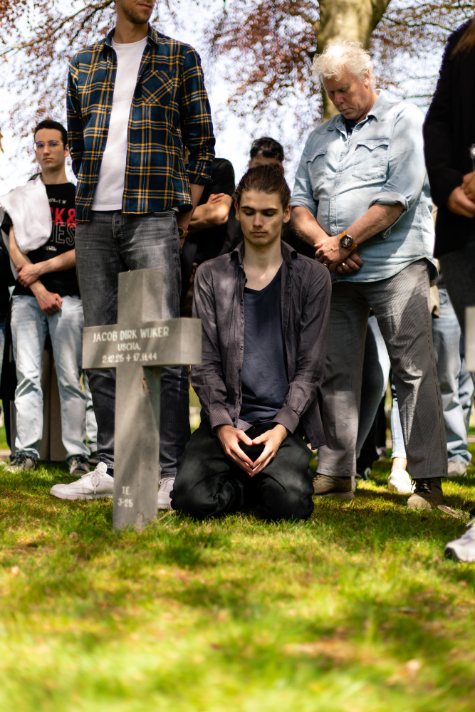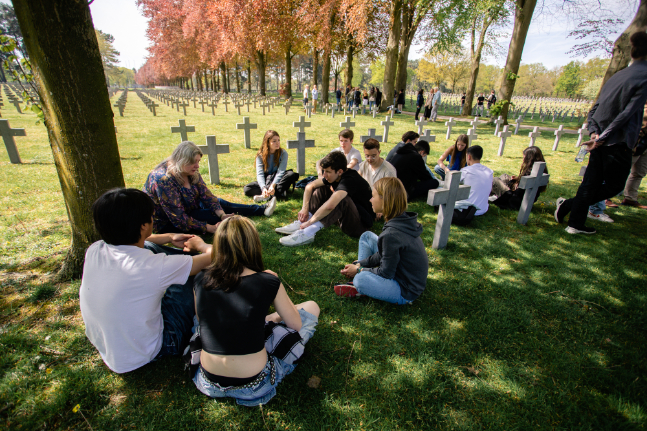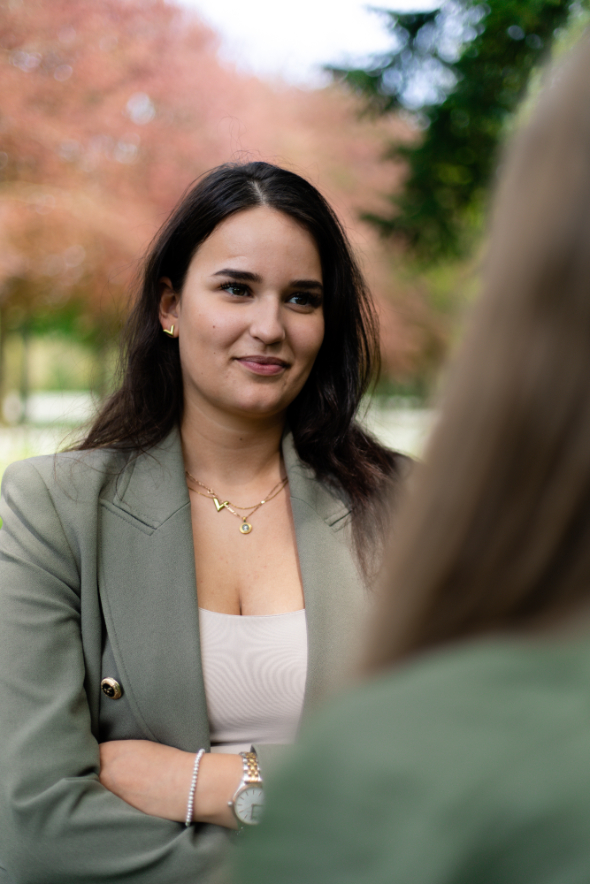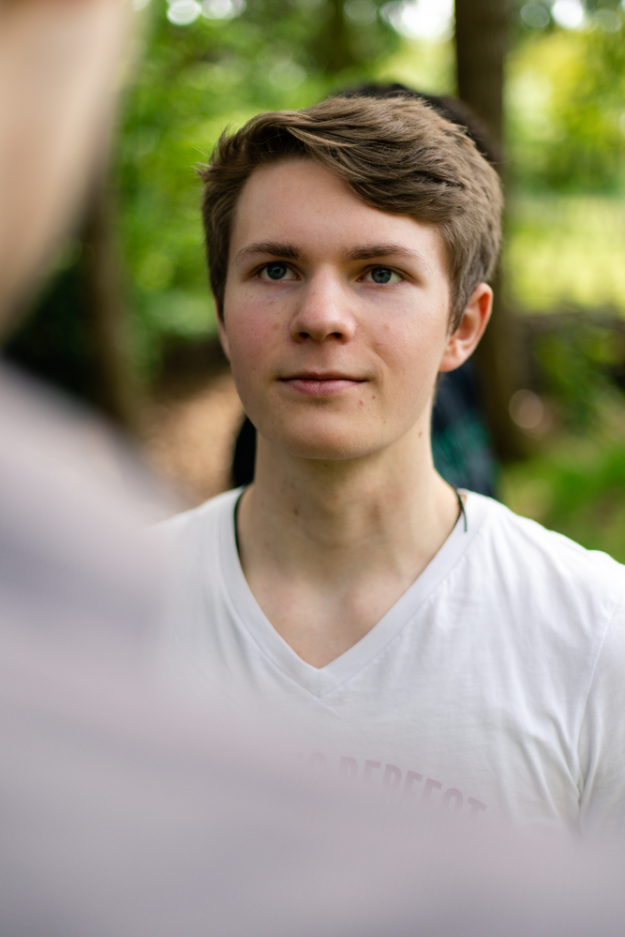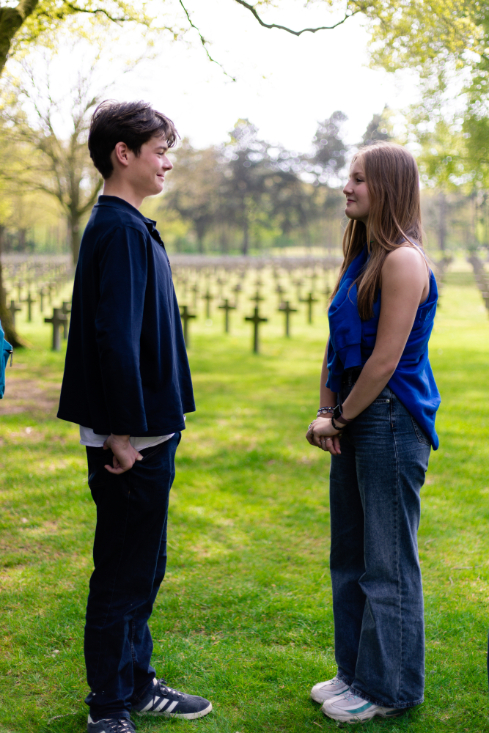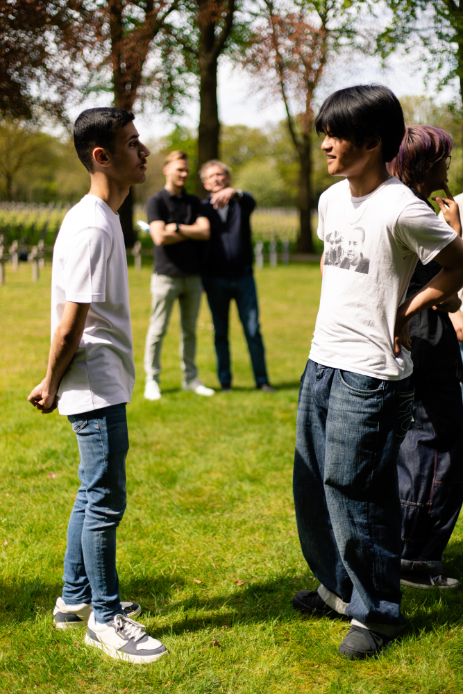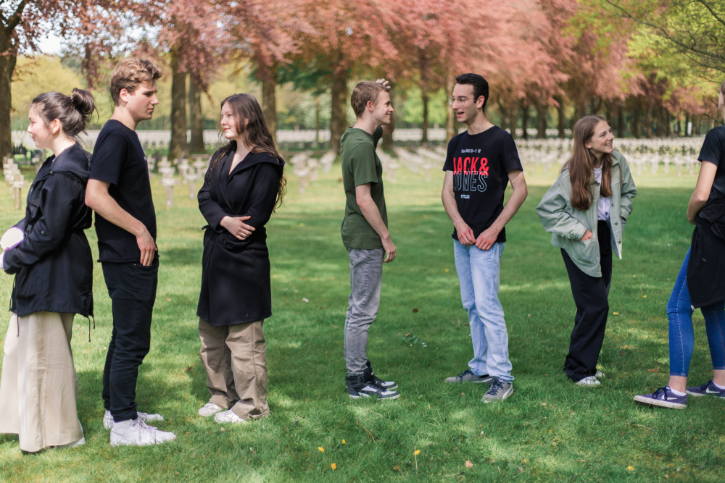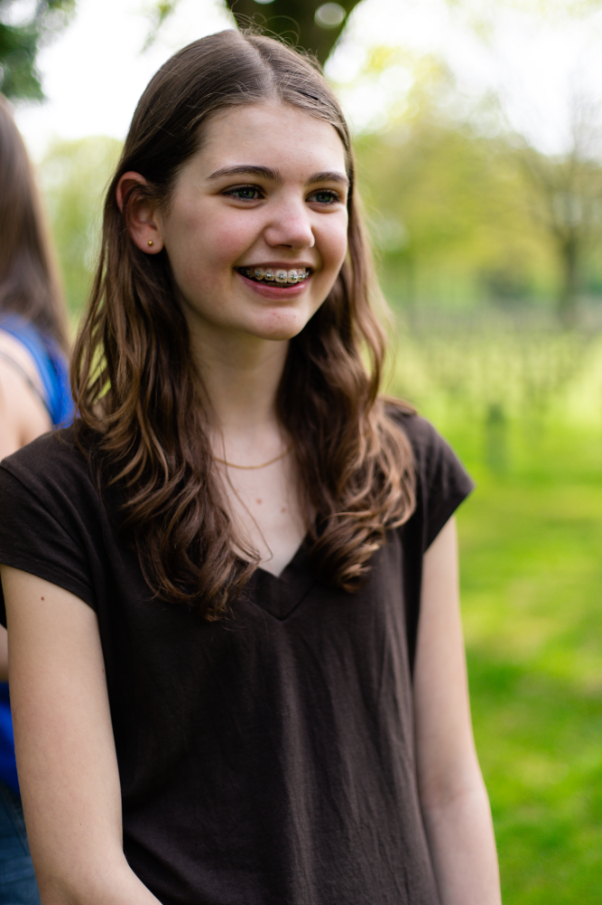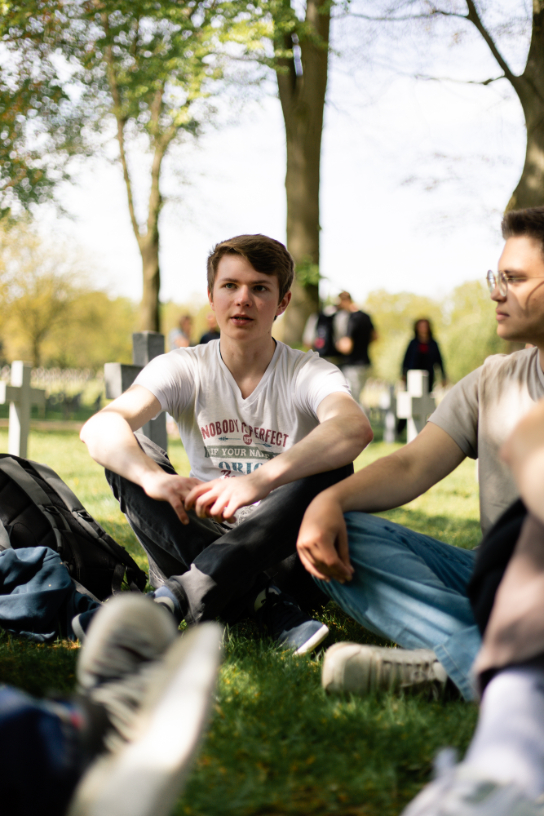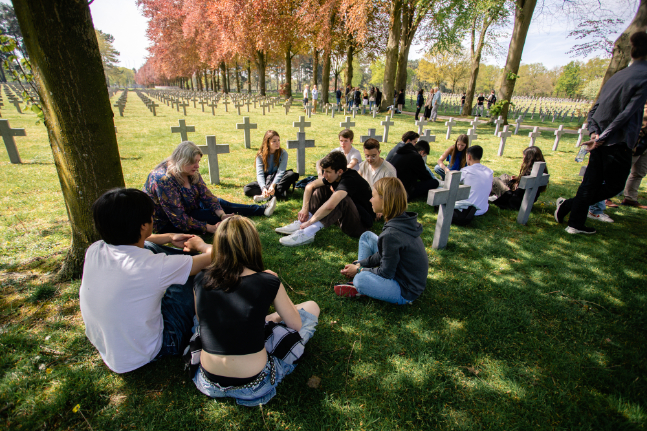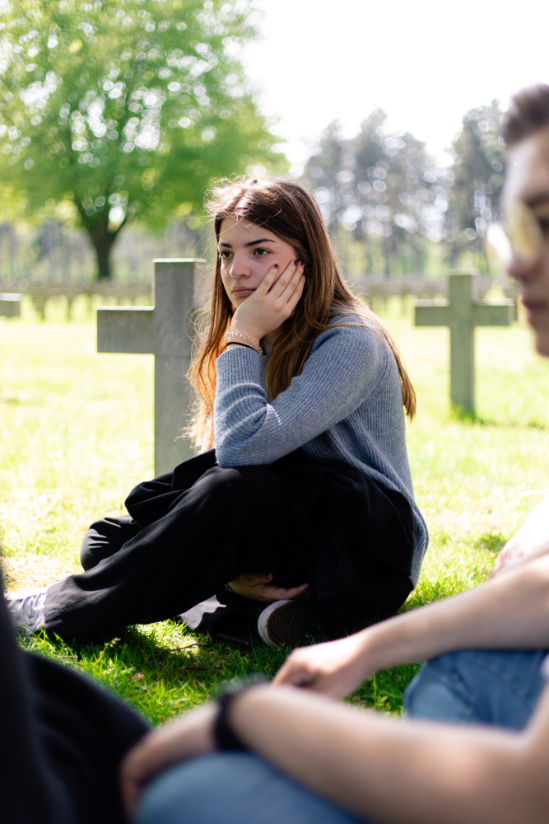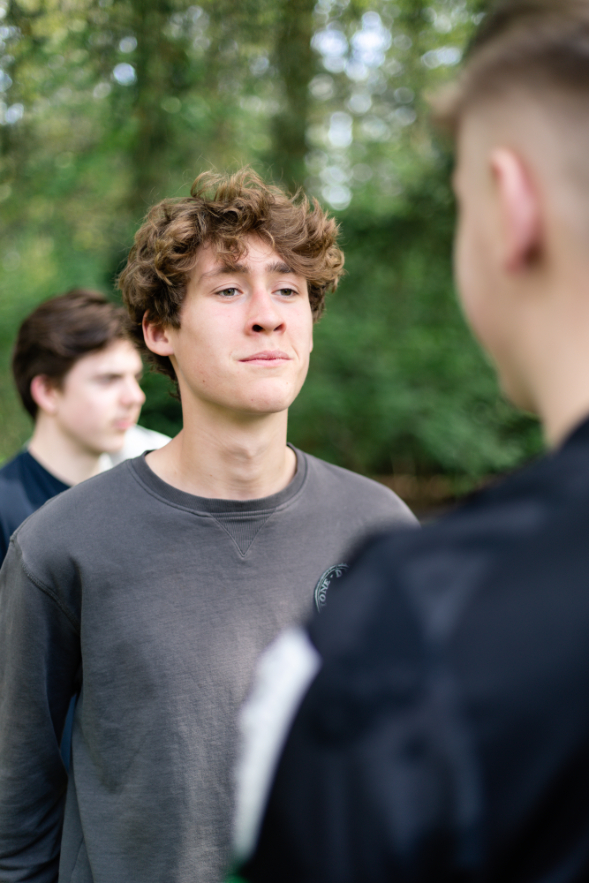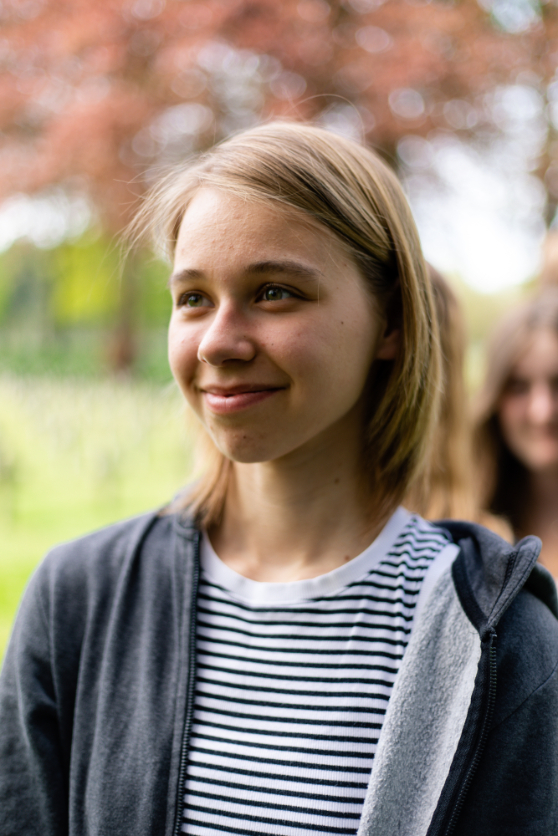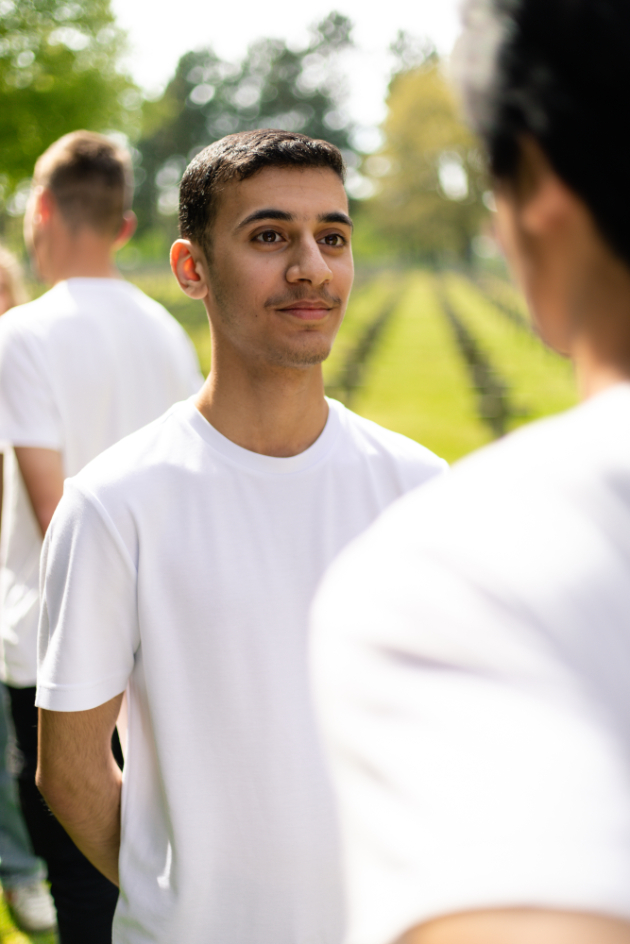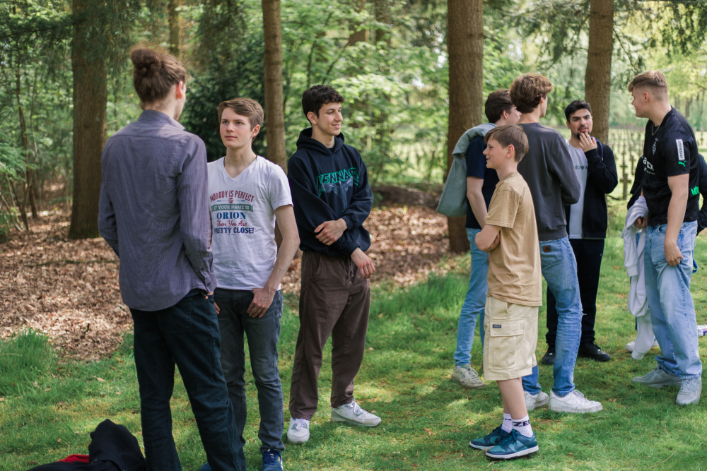Dutch and German young people meet.
Report of the visit on May 4, 2023:
The meeting between the Dutch and German youth took place on May 4 at the Ysselsteyn German cemetery in Limburg in the Netherlands. A cemetery where 32,000 German soldiers are buried including two to three thousand war criminals and 500 Dutch collaborators*.
*During the occupation years, there are Dutch people who voluntarily cooperate with the Germans: collaborators. Collaborators supported and helped the Nazis and thus turned against the Dutch government in exile. They are therefore popularly called "country traitors.
After the war, some 310,000 Dutch were eventually prosecuted for suspected collaboration with the Nazis. These were light cases who had been members of the NSB for a blue Monday but there were also heavy cases, such as fanatical NSB members, Jew hunters or Dutchmen who had been in German military service. At least 50,000 Dutchmen wore German uniforms during the war and served in the German army. Also, between 25-30,000 Dutchmen served in the Waffen-SS.
Among the 32,000 German graves are SS men but also Dutch SS men. There are also a great many conscripted German soldiers. Including 1,100 German soldiers under the age of 18. Many of whom had no choice.
To one of these graves we went with Dutch and German youth. His name is Harry Hermann.
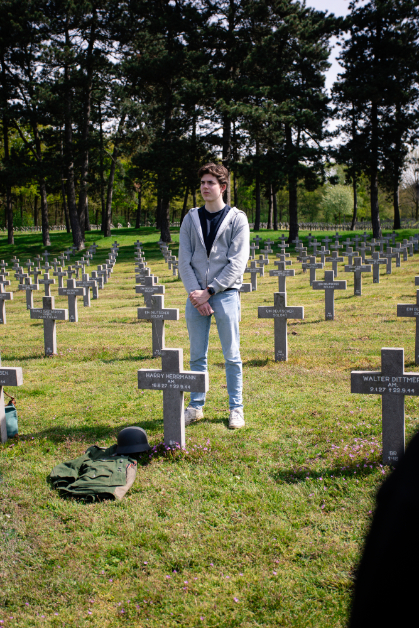
Harry Hermann died when he was just a few months 17 years old. He was sent into the army without training where he died fighting after only a few weeks. His parents never got over their son's grief. Harry died near Eindhoven and his parents were very eager to visit their son's grave to say goodbye and express their grief. To do so they traveled to Eindhoven twice but the cemetery was closed both times and they were told that reburial was in progress. Harry Hermann's sister ended up being the only one of the family who was able to visit the grave of her 17-year-old brother.
She is also the one who wrote a letter to the people at the German cemetery about her brother. You can read this one here.
Behind the grave of Harry Herman was Roemer, a 17-year-old Dutch boy. The facilitators of Remembrance Full of Life told the story of Harry's life and the dilemmas he faced. Together the youth discussed guilt, shame and choices. Harry Hermann's family system was also put down.
Then the young people visited the grave of 18-year-old boy Jacob Dirk Wijker. He came from an NSB family. His parents and his oldest brother were fanatical NSB members. Jacob Dirk Wijker walked in the garden with his SS uniform on which he was shot dead by the resistance. His sister was the only one who did not support the NSB. Her boyfriend was in the resistance.
Jack, also 18, stood as representative for 18-year-old Jacob Dirk Wijker.
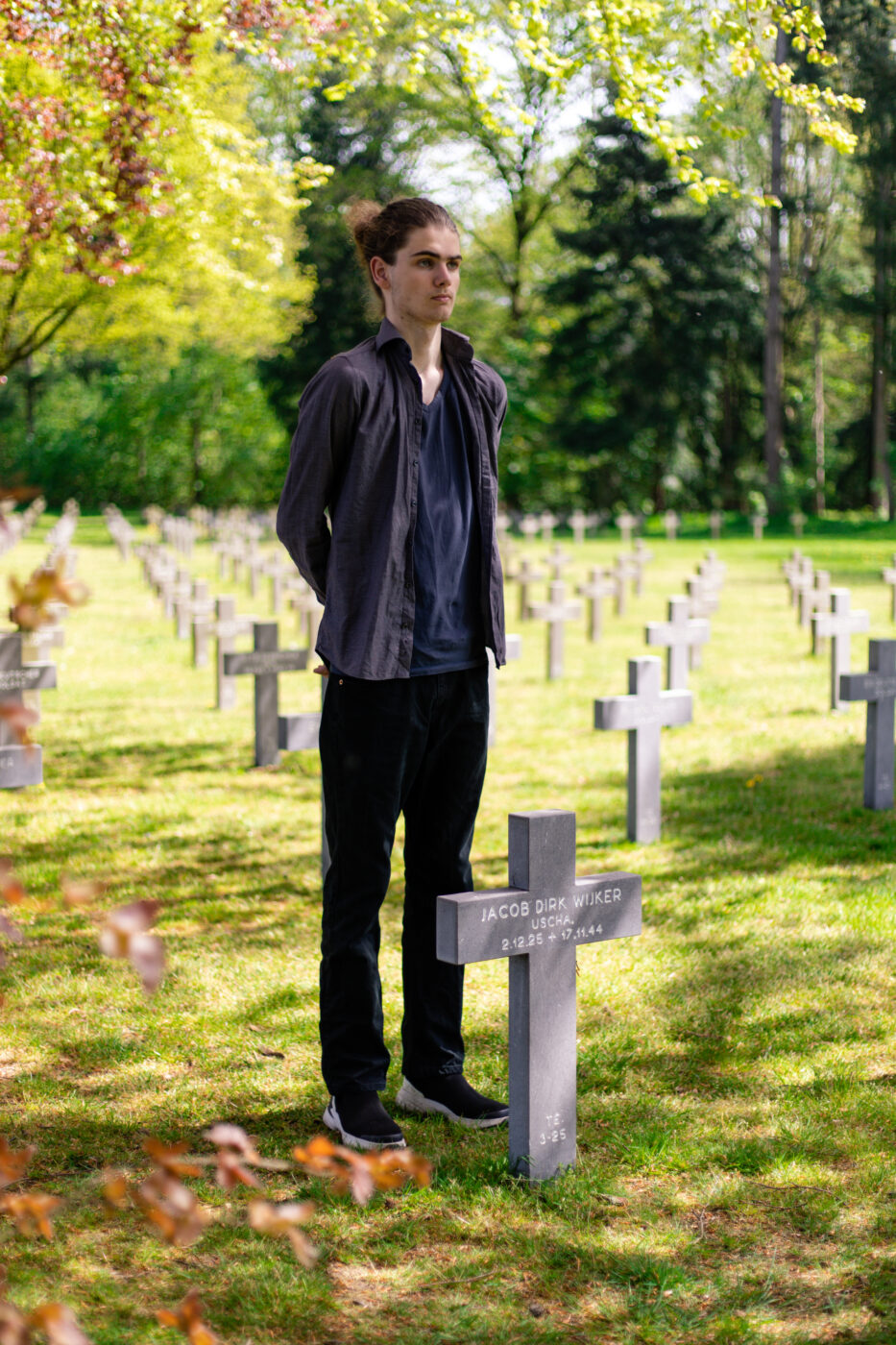
The facilitator asked the young people who participated in the arrangement behind the grave how it felt to them. Then they placed representatives for the system from which Jacob Dirk Wijker came from. His parents, his sister with her boyfriend but also the war because this reflected the context. Also after that, she engaged in a conversation with the young people to what extent, as a child part of a family in which parents and a big brother in the NSB are still free in your choice. She then asked how many young people see their parents or big brother or sister as role models? To which almost everyone raised their hand. She asked them to take their seats in the lineup.
Then the young people engaged in a discussion about their experience. They were asked if they would be able to organize a commemoration together. Their answer was completely Yes!
Ysselsteyn Cemetery
We believe that young people of different nationalities can talk to each other about the impact of war on their families. Perhaps on themselves? What dynamics can the Dutch and German young people name? To what extent does guilt and shame play a role among the German youth. Sarphati Media Productions made the documentary Wiedergut from which this meeting emerged. In approaching the German youth, we noticed that the word Wiedergut is also very sensitive. Wiedergut suggests that it was good and now it can be good again as it was. And the latter is impossible. That is the pain and sensitivity among the German youth, elders and organizations we speak to. For many, the word Wiedergut is misplaced.
It does allow for a meeting between Dutch and German youth to talk about World War II. How this is still present in the lives of these young people. When this is visible or palpable. How this colors this encounter that cannot be neutral.
Particularly not because the meeting takes place at the German War Cemetery Ysselsteyn. A place where 31,000 German soldiers are buried in the Netherlands. There also lie Dutchmen whose nationality may have been taken away because of their war crimes during World War II in which they collaborated or cooperated with Nazi Germany. For this, these people were convicted.
At this site, young people engaged in a conversation about how great the impact of war is.
Read more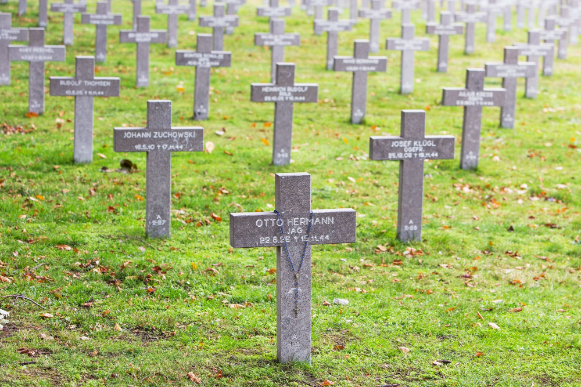
Additional Information
We asked a journalist specializing in World War II, Stijn Reurs, about the role of the Netherlands during World War II. He came up with some striking figures about how the Netherlands cooperated with Nazi Germany during World War II.
Below are documentaries that deal with this topic:
Documentary: Wiedergut broadcast by the EO.
In this film, Dutch-German filmmaking duo Ruben Gischler and Tobias Müller examine the memories of and lessons from the Holocaust anno 2022. During a road trip through Germany and the Netherlands, they speak to residents, survivors and relatives to find out how they deal with history anno 2022. What lessons have been learned and how is the memory of the persecution of the Jews kept alive? The route leads past universities, memorial sites and local projects. The question is always how 'wieder gut' are we?
Documentary: Hitler's Children.
How can you deal with guilt and shame? An interesting documentary aired by VRPO is Hitler's Children. How do you deal with the realization that you are descended from a Nazi executioner?
The documentary shows how the grandchildren of Nazi leaders such as Heinrich Himmler and Hermann Goering struggle with their origins.
"Two of Hermann Goering's grandchildren, for example, have had themselves sterilized because they absolutely do not want the Luftwaffe commander-in-chief's genetic material to ever spread further. Heinrich Himmler's granddaughter, again, is not at all afraid of this. Because by thinking that you are hereditarily burdened, you are in fact going along with the weak-minded ideology of the Nazis," she believes.
Documentary: A war that never passed
Former minister Ed van Thijn remained silent about his wartime experiences for 50 years, making an unintentional impact. He himself and intimates tell about his life and the impact of this silence.
As an eight-year-old Jewish boy, Ed van Thijn fled Amsterdam after a raid during World War II. When he was ten he was betrayed and ended up in camp Westerbork, where he was liberated. After the war, he came to a child psychiatrist who gave him electroshock therapy. As a result, he decides to remain silent about his war experiences for fifty years, which has an unintended major impact on his immediate environment.
Documentary: Hitler's Child Soldiers.
In the spring of 1945, hundreds of Dutch children were being prepared as SS in the barracks in Graz to go to the approaching Eastern Front.
Many of them faced war violence prematurely. Bombings, fusillades and mass murders took place on the barracks grounds. Terrible events that the still living witnesses, like Jan, still remember. Who were these child soldiers and how did they end up as the last SS in the maelstrom of war? In Hitler's Child Soldiers, a total of five child soldiers of the time look back on these life-defining events.
